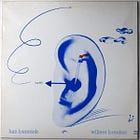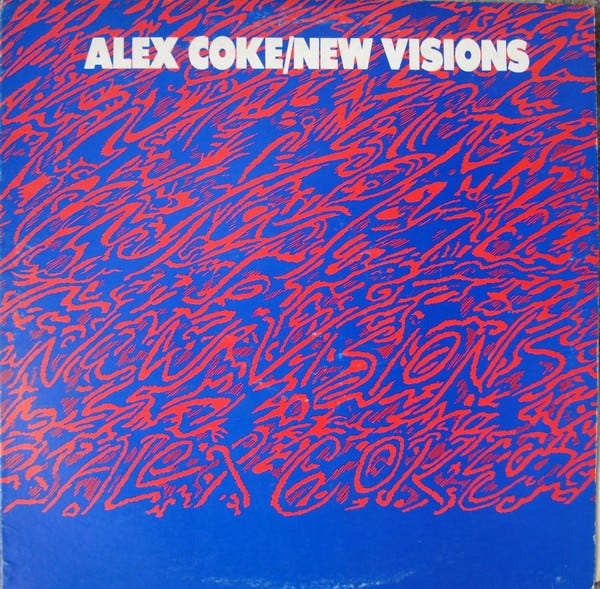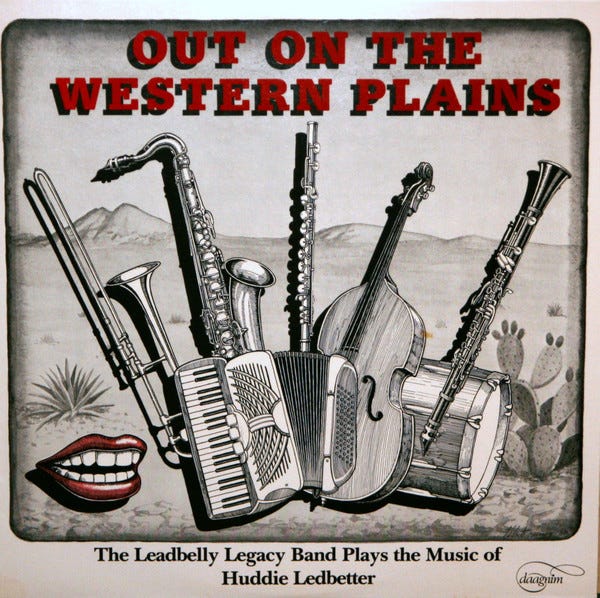The idea of music that is good or beautiful or avant-garde or difficult or simple or commercial or jazz is far less important than music that has the absolute involvement of all of the participants. This absolute involvement is quite difficult to obtain, and there is a certain magical quality to search for it.
-Tina Marsh
That Big River called Jazz is deep and wide and takes us to new and amazing places, if we let it.
Franz Kafka wrote, “Many a book is like a key to unknown chambers within the castle of one’s own self.” I say, many a song is like a key to unknown chambers within the castle of one’s soul. Over the past few years, I have discovered two important groups whose music found a way into the castle of my soul, both from the heartland of America: the Northwoods Improvisers in Michigan and the Creative Opportunity Orchestra in Texas.
Interestingly, as I mentioned last week, the late trumpeter and artist Dennis González was a crucial link in my rediscovery of Henry Grimes. As it turns out, González was also an important link in my discovery of both the Northwoods Improvisers and the Creative Opportunity Orchestra.
The first time I heard about González was when he and Faruq Z. Bey (post-Griot Galaxy) played with the Northwoods Improvisers as part of a septet on Hymn for Tomasz Stanko. The album was recorded in November 2003 and March 2004 but wasn’t released until 2009 on the Qbico label. I only heard the album for the first time a few years ago.
Here is the title track, and the remainder of the album:
I ran across González again on the Northwoods Improvisers’ song Hymn for Dennis Gonzalez from their 2022 album Fanfares, released in 2023 on the Entropy Stereo Recordings label. The song was written in honor of him shortly after his death on March 15, 2022.
Incidentally, the Northwoods Improvisers is releasing another terrific CD, Unified View, on the Entropy Stereo Recordings label. Look for it - This is must-have music. Incredible.
At about the same time I heard about Hymn for Tomasz Stanko and Fanfares, I heard González again, this time playing on Tina Marsh and the Creative Opportunity Orchestra’s (CO2) 1988 album/cassette, Benediction:
All the musicians on Benediction are excellent. To name a few: vocalese by Tina Marsh, Dennis González on trumpet, Willem Breuker alumnus Alex Coke on tenor sax, John Mills on saxophone, Martin Banks on loan from Sun Ra on trumpet, Bob Rodriguez on piano, James Lakey and Randy Zimmerman on trombone, and Jay Rozen on tuba. According to The Wire magazine’s Ben Watson:
The compositions are spirited and angular, providing the kind of classical composer’s slant on jazz England seems incapable of producing… The band achieves a scintillating precision of the Vienna Art Orchestra, an enthusiasm for compositional complexity that does not inhibit their ability to surge and swing.
Benediction is a remarkable debut release. However, it’s important to remember that the orchestra had spent nearly a decade in Austin, Texas, honing this adventurous music. This was a release that opened up what might be called a community ensemble and turned it into a regional powerhouse on the Texas frontier.
Benediction, and the CO2 taken as a whole, clearly shows that there was indeed a better system to be found, one that could allow its members to liberate themselves from constrictive forms, while at the same time embracing both experimentation and, yes, tradition on their own terms.
I featured the title track above. Here’s another track from Benediction, Randy Zimmerman’s Pursuit:
Benediction was recorded live on February 26, 1988, at the University of Texas Arts Complex in Austin, Texas, and released on González’s daagnim label.
When I asked Alex Coke how González and CO2 came together, he told me:
The creative music scene in Texas was pretty small at the time, so Tina and Dennis were aware of one another as artists and producers… I traveled to Dallas often to visit family and friends and would run into him and occasionally sit in.
Dennis González got the idea of forming the daagnim organization soon after he moved to Dallas in 1980. In a 1992 Cadence magazine article, he said:
I really wanted to play music but I didn’t know anybody. And as I went around town and listened to musicians and compared it to what I had heard in my head to what they were playing, I noticed that they were doing the same old standards. Standards are beautiful, but it seemed that they were so used to doing them and just fill up time - nobody was being creative… So I had decided with this 4-track machine I have to overdub my own instruments and record my own records. I had read about a New York musician, Errol Parker, who was putting out his own records. So my wife and I started working on getting some money together and learning just how to do this.
Soon after, he formed an organization called the Dallas Association for Avant-Garde and Neo-Impressionistic Music (daagnim), which functioned both as a group of musicians and as his record label. He named and shaped it after Chicago’s AACM. The organization was an artist-run company: each project was funded by the person who was being recorded, and González provided the know-how and help to put the record together.
At about the same time, three hours south of Dallas in Austin, a group of musicians interested in the opportunity to explore original jazz compositions and improvisation in a large-band format founded the Creative Opportunity Orchestra. It was the only ensemble of its type in the Southwest.
In January 1981, they gave their first two concerts to packed houses at the classical revival style Paramount Theatre, completed in 1915 and located at 713 Congress Avenue in Austin, Texas:
Here’s a look inside:
What a show that must have been…
In From Fred Astaire to Sun Ra, I had been writing about my experience in the Netherlands in a piece called New Dutch Swing:
It covers in detail the tremendous and personal impact Willem Breuker and the musicians in the Instant Composers Pool (ICP) had on my jazz journey.
In some strange twist of fate, shortly after I published the piece, I was contacted by members of the ICP, thanking me for covering their work. In particular, the great bassist Arjen Gorter reached out.
From the ICP and Arjen, I learned about Alex Coke, an American who was playing with Willem Breuker’s Kollektief. In January 2023, I reached out to Alex through his email group service at alexcokenewsgroup@groups.io and was contacted by Nicki Cutean in Austin. I joined their newsgroup and, with Nicki’s help, I was able to locate most of CO2’s early recordings and connect with Alex.
Alex Coke was born in Dallas, Texas, and educated at the University of Colorado in Boulder. After college, he moved back to Austin in 1977. By 1980, he had formed a group called New Visions Ensemble. They recorded their debut album live at Lone Star Studio in November 1981. It was titled New Visions, and released on Austin-based re records in 1982:
This was Alex’s debut album as a leader and also featured a singer, Tina Marsh. The New Visions Ensemble was really the precursor to the CO2.
About New Visions, Alex wrote:
For two years this band rehearsed weekly. We produced and promoted our own concerts. Although this is neither the most inside material we have - or the most outside - I feel it is a pretty good representation of the variety of things we try to do.
I feel the music has a regional quality to it and, like New Visions vocalist Tina Marsh, think of it as a type of modern “tribal” music.
We’ve gotten together to pool and synthesize our individual comcepts and ideas into a group statement, exploring a group sound while seving as a springboard for the individual musicians to investigate new ideas or concepts.
Six years later, in June 1987, actually before the CO2’s February 1988 Benediction recording, Alex and Tina worked on a project that began as this kitchen table cassette:
It was distributed in a larger format as Out On The Western Plains in 1989, when González released it on his daagnim label. The group included Alex, Tina, Steve Feld on trombone, Bob Paredes on clarinet, Catherine Schieve on accordion, Dave Morgan on bass and cello, and Rock Savage on drums. They called themselves the Leadbelly Legacy Band:
The session included Can’t You Line Em based on this Lead Belly song:
The phrase “Can’t You Line Em” captures the sounds and rhythm of railroad construction crews working on lining up tracks. The original folk song depicts the difficult labor of African American prisoners working on railroad chain gangs.
In some odd way, the Leadbelly Legacy Band’s version of Can’t You Line Em kind of reminds me in spirit more than musically of the Art Ensemble of Chicago’s Get In Line:
In many ways, like González’s daagnim organization in Dallas, CO2 was an Austin cooperative much in line with what the AACM had done and is still doing in Chicago and BAG in St. Louis. Texas has been traditionally congenial to big bands from the days of Bob Willis right up through Ornette Coleman’s ensembles, so CO2 fit right into that tradition.
According to Marsh, CO2 started as “a rag-tag bunch of hippies and post-hippies trying to do something.” Marsh and some friends heard about Austin’s cultural service contracts and wanted to get some city money. Someone suggested a big band. Marsh recalls,
I didn’t want to do another nostalgia kind of big band… Wait a minute. There are lots of us who are on the fringe of this sort of music society here; we don’t get much work, really, to speak of. Let’s get a lot of us together and see what we come up with and have a concert and see if they’ll give us some money to do that.
By the end of the 1980s, the city responded, and the orchestra had evolved and matured into a professional group of musicians. In February 1990, CO2 recorded the seminal RADIOactive, which we’ll cover in Part 2. On the cover of the cassette, Marsh wrote:
This is the latest documented music from an evolving group of American musicians concerned with the evolution of this particularly American music. Not the usual mass-marketed pop music, we hope that you will enjoy its challenges and pleasures; and that you will play it in your home and in your car; and that it will have the well-deserved chance to be active on your Radio.
In 1990, while Willem Breuker’s Kollektief was doing a seven-week North American tour, saxophonist Peter Barkema was called back to the Netherlands due to a family crisis. He was replaced by Alex Coke. After finishing the tour, Alex was asked to join the band. So for roughly the next ten years, he moved to the Netherlands to tour and record with them.
Alex’s first recording with the Kollektief was Parade, a collaboration with the Mondriaan String, recorded in the Netherlands in November 1990. In a 1992 live recording at the Stadsschouwburg Amsterdam, Alex plays this nice tenor solo on a song written for him by Willem Breuker called, Song for Alex:
Even though Alex left the Netherlands in 2001 and moved back to Austin, he continues to perform and record in the Netherlands with the Kollektief, many released on the superb BVHAAST label founded in 1974 by Breuker as an outlet for creative Dutch music.
CO2 is often compared to the Ellington orchestra or Breuker’s Kollektief in the way that songs are written with individual soloists in mind. This is also true of CO2; however, a big difference from the Ellington or Breuker’s groups is that the CO2 musicians and soloists contribute the compositions themselves - hence the title, the “Composers Opportunity” Orchesta. This is an important distinction and what I feel makes their albums sound so original and fresh.
Tina Marsh was the axis around which CO2 revolved until her untimely passing in 2009. The final CO2 release in her lifetime was called It’s Possible. With her leadership, CO2 was possible. But it wasn’t easy. What kept her going? In her words:
A certain kind of faith down deep that everything is gonna be all right, as long as I try to keep close to myself and see what the truth is inside myself.
Those are wise words for all of us. You can get a feel for Tina Marsh’s energy and drive from this short video:
Along with endless energy, Tina Marsh was a visionary. According to Coke:
She brought the commonality of people together. None of these projects she did was commercially successful by most standards. Nobody ever gave her a free pass. She did it out of her own sheer will. That was very inspiring.
This is the first of a three-part series dedicated to a musical warrior and my journey of discovery into the world of Tina Marsh and the CO2.
Please hit this link to buy me a cup of coffee if you’d like to show your guide some appreciation for this and past journeys. Know in advance that I thank you for your kindness and support.
If you like what you’ve been reading and hearing so far on our journey and would like to share this with someone you think might be interested in learning more about our great American art form, Jazz, just hit the “Share” button.
From Astaire to Sun Ra: A Jazz Journey is a reader-supported publication. To subscribe, please hit the “Subscribe now” button.
Feel free to contact me at any time to talk shop. I welcome and encourage that.
Until then, keep on walking….










Thanks as always, Tyler, for introducing me to music known and unknown.
Haven’t seen the name Tomasz Stanko in a while. He and Manfred Schoof influenced my trumpet playing back in the day.
I’d never heard of Tina Marsh, so a new way to go!
I was hoping we might sail down this tributary when you mentioned her last week. I have 'Benediction' bought because of the González connection but I have never investigated further. Looking forward to being guided by you.
And 'Hymn for Stanko' is a fabulous tribute to a very important musician